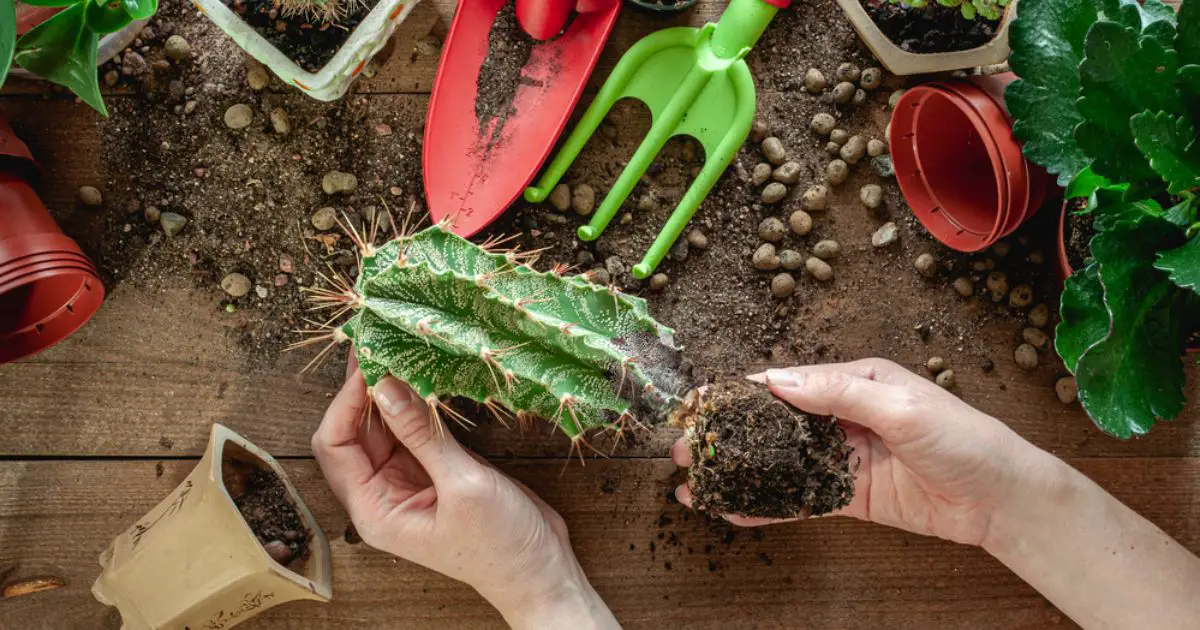There’s a common misconception that succulents are idiot-proof. Succulents are mostly low maintenance and resilient to neglect, but that doesn’t make them immortal.
If your succulent is dying or simply doesn’t look healthy, we have you covered. Start with the “What’s Wrong With MY Succulent” chart below then make your way through the article for an in-depth guide to save your dying succulents.
What’s Wrong With My Succulent?
Follow our succulent problem decision tree to determine what is wrong with your succulent.
Then keep reading to find out how to fix the problem!

Want to see a larger version of our decision tree, or even print it? Sure, we’ve got you covered:
- Download “Whats Wrong With My Succulent” Decision Tree PDF Printable
- Download “Whats Wrong With My Succulent” Image file
Overwatering

Succulents come from desert or semi-arid ecosystems, where it rarely rains but it pours. They have evolved to store water and nutrients in their fleshy leaves to sustain them in the long hot gaps between torrential storms.
Many gardeners overwater their succulents, not by watering too much but too often. This mistake can lead to many different causes of succulent death, such as rot and pest infestations.
How Do I Know if My Succulent Is Overwatered?

You can know if your succulent is overwatered by analyzing your own behavior:
- If you’re watering the plant on a consistent weekly schedule, regardless of how dry the plant feels, you’re probably overwatering.
- If you’re watering at the same rate in the winter as you do in the summer, you’re overwatering.
- If your plant is left standing in a puddle each time you water, whether in the pot or in the saucer, you’re overwatering.
Another way to diagnose overwatering is by looking at the plant, and the leaves are a good place to start.
A correctly watered succulent will have firm, fleshy, bright green leaves. If you are overwatering, the leaves become flaccid and lose color, becoming soft, wrinkled, and semi-translucent. They may even turn to a yellow or brownish color.
Note: If you continue to overwater, the leaves will turn black and drop off the plant easily. The stem of the plant will become droopy. Under the soil, the roots will likely rot.
Preventing Overwatering
When it comes to overwatering, the best offense is a good defense.
First, get to know your succulent. Find out the weight of your succulent (together with the pot and soil) when it is dry and when it is recently watered. Experiment with how often you water and watch how the plant reacts.
Second, choose an appropriate watering technique. We recommend the “soak and dry” method and the “dunk and soak” method.
Last but not least, set your plant up for success with the right kind of pot and growing medium.
If your soil is inappropriate for a succulent (too high in organic matter, not well-draining) or your pot has no drainage hole, you may need to repot to help it dry out and avoid future overwatering.
However, be extra careful in repotting an overwatered succulent — overwatered plants’ stems and branches can break easily.
Fixing Overwatering
If you’ve already overwatered your plant, there may be hope. Let your plant’s potting medium dry out completely. In the winter, this could take a month or more. Get a feel for the plant’s dry weight and begin watering again but sparingly and less frequently than you think you need to. Don’t forget to let the pot go dry again after each time you water until the plant regains its vigor.
If the plant is rotting, it may be too late to save the whole succulent. Your best hope may be to propagate the plant. Even if you only have a few healthy leaves or a small section of stem, you may be able to grow a new, healthy succulent.
Underwatering
Overwatering is a more common problem than underwatering, but even a succulent has its limits.
How Do I Know if My Succulent Is Underwatering
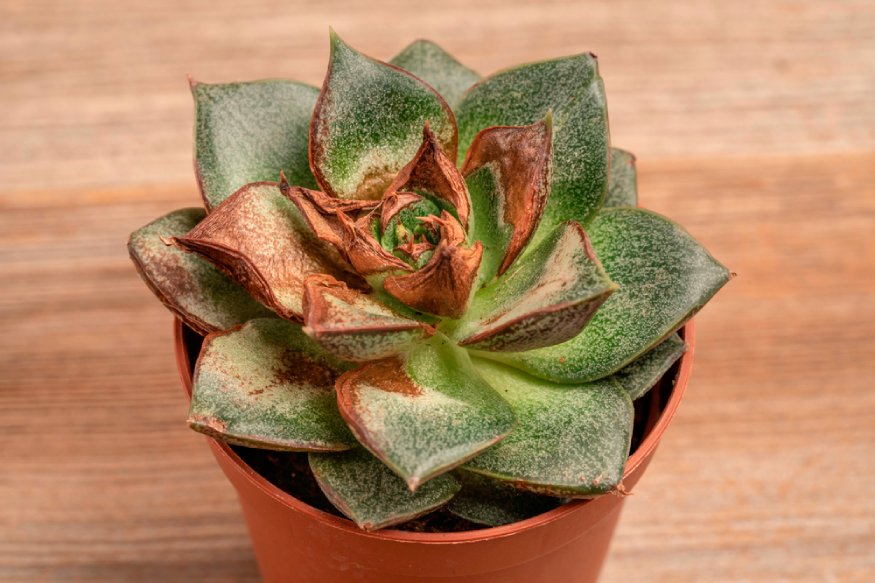
A parched succulent will begin to use up the water it stores in its leaves, exactly what it evolved to do. The first sign of severe underwatering is usually that some of the leaves shrivel, dry up, and brown as they run of water. This usually starts with the leaves closest to the base of the plant and works its way upward.
Info: Leaves that are not yet brown may also show signs of underwatering. Instead of feeling plump, firm, and fleshy, they may feel soft and limp.
Keep in mind that leaves, like all living things, eventually die. Even on a healthy plant, the lowermost leaves will eventually dry out and die as the plant grows larger. That doesn’t necessarily mean you’re underwatering. You only need to be concerned if the die-off becomes excessive.
Sometimes succulents (especially cacti) are incorrectly diagnosed with underwatering because of a natural phenomenon called “corking.” Corking is when the stem of a mature succulent turns brown and hardens, developing an almost woody feel. This is a normal part of the growth cycle and not a sign of underwatering. The succulent is simply hardening its stem to support larger growth.
Fixing Underwatering
Rehabilitating an underwatered but still living plant is pretty easy. You can start by carefully removing any dead or dying leaves using a sharp and sterile knife or shears if you’d like. Or just leave them. Either way, use an appropriate watering technique to give the plant plenty of water.
Check the plant a few days later. It may have already sucked up all the water in an attempt to replenish its internal water supply. If so, water it again. This may be enough to restore your plant to good health, minus a few lower leaves.
Preventing Underwatering
The best way to avoid repeated underwatering is to be more attentive to your plant. One strategy is to build a habit that includes routine succulent care.
- Pick one day each week to give the plant and soil a visual and physical inspection.
- Check out the plant for symptoms of over or underwatering.
- Stick your finger into the plant’s soil, down to the first knuckle.
- If the soil is dried out, water it.
Keeping a record of when you water and your plant’s health will help you better understand how often your plant needs watering at various times of the year.
Insufficient Soil Drainage
There’s a reason people don’t grow hydroponic succulents — planting your succulents in pots and growing medium with insufficient drainage is an easy way to kill them. Repotting may be essential to set your succulent up for success.
Diagnosing Inadequate Drainage
Often you won’t know you have bad drainage just from looking at your plant — because the most common symptoms of poor drainage overlap with the symptoms of overwatering. Your plant may have flaccid leaves and develop root rot, for example. Instead of looking at the plant itself, you need to evaluate how you’re growing it.
First of all, if you planted your succulent directly into a pot or planter with no drainage hole in the bottom, you almost certainly have insufficient drainage.
Second, if you potted your succulent in a standard commercial potting soil, straight compost, or even (heaven forbid) soil from your backyard, your plant has insufficient drainage.
Third, if you fell for a common piece of bad advice and included large hard objects in the bottom of your pot (such as gravel or broken pieces of old terracotta flower pots), supposedly to create more drainage, you may have done the opposite. These sorts of objects can block the drainage hole of your pot, drowning your plant.
Finally, if you haven’t repotted your succulent in years so that the pot is crammed full of roots and they’re trying to escape through the drainage hole, your plant has insufficient drainage — even if you’re using the right type of pot and soil.
Preventing Inadequate Drainage
The key to a healthy succulent is to use the right kind of pot and growing medium. That typically means a pot with a drainage hole, or you can use the “pot in a pot” technique.
The kind of soil that is beneficial for other kinds of plants is not what works best for succulents. Succulents need loose, well-draining soil. That means a mix that is low in organic content and high in gritty amendments. The ideal gritty mix includes coarse sand and larger gritty material (such as perlite, pumice, or pebbles).
If you must go with a commercial mix, use one specifically made for cactuses. However, a much better option is to mix your own using one of our simple recipes.
Fixing Inadequate Drainage
If your plant is suffering from inadequate drainage, the only real solution is to create drainage. Repot the plant using a loose well-draining potting mix in a pot with a drainage hole.
If overgrown roots cause the drainage problem, make sure to repot into a larger pot. By doing so, you will give the roots plenty of room to continue to grow. Remove any offsets the plant has created and give them their own pots.
When you repot, use an appropriate potting mix that mimics the sandy, rocky environments where succulents thrive in the wild. You’ll be amazed at the difference you see in your plant’s health.
Sunburn

Virtually all plants and animals have a Goldilocks-type relationship with the sun. Too much or too little sunlight can endanger your plant. Fortunately, many succulents are fairly tolerant, so the “just right” range is doable in most homes.
Diagnosing Sunburn
Sunburn is leaf discoloration. In milder forms, there may be a slight reddening of the leaf, but ultimately sunburn creates dry brown patches or tips on the leaves of a succulent.
Info: Sunburn tends to affect the leaves that have the greatest sun exposure, whereas underwatering tends to affect the leaves at the base of the plant first.
Sunburn is most common with succulents that live outdoors in the summer, but it can also happen indoors. For example, your plant could become sunburned if you use a grow-light too close to the plant for too long (plants under grow lamps need night darkness too) or in an overheated greenhouse.
Preventing Sunburn
How much sun is too much depends on the plant. Some succulents (like cacti) are happy to get direct sun all day, as they would in a desert. However, many succulents (like echeveria) are short plants whose natural home is under the canopy of other plants. They are accustomed to dappled sun or direct sun for only a few hours a day when it is at a lower angle. When they get too much direct sunlight, they can become sunburned.
Many succulents can tolerate some direct sun, especially if they are introduced to it gradually. Don’t move a plant directly from a fully-shaded area to a fully-sunny area.
If you’ve recently propagated a plant and shielded the cuttings from direct sunlight while they took root, you need to gradually move them to a brighter spot. If you’ve kept a plant in a dim, north-facing window all winter and you move it straight outdoors into direct all-day summer sunlight, expect sunburn.
Info: Just like the “hardening off” process for vegetable seedlings, succulents benefit from gradual transitions.
Read about the specific needs of your species of succulent. Then, decide where you can accommodate your plant’s specific needs.
Fixing Sunburn
Moving a sunburned plant to an area with dappled shade (or indoors to an area with only indirect light) is an easy fix to stop your plant from worsening.
Info: There’s no way to undo the damage of sunburn. The damaged leaves will remain damaged.
You can always remove the damaged leaves from the plant if you’d like. You can either twist them off or use a sharp, sterile pruning knife or shears. If the leaves are in particularly bad shape, you can throw them away. However, it is possible to propagate leaves with minimal to moderate aesthetic damage, so long as the leaf as a whole is healthy.
Insufficient Light For Your Succulent
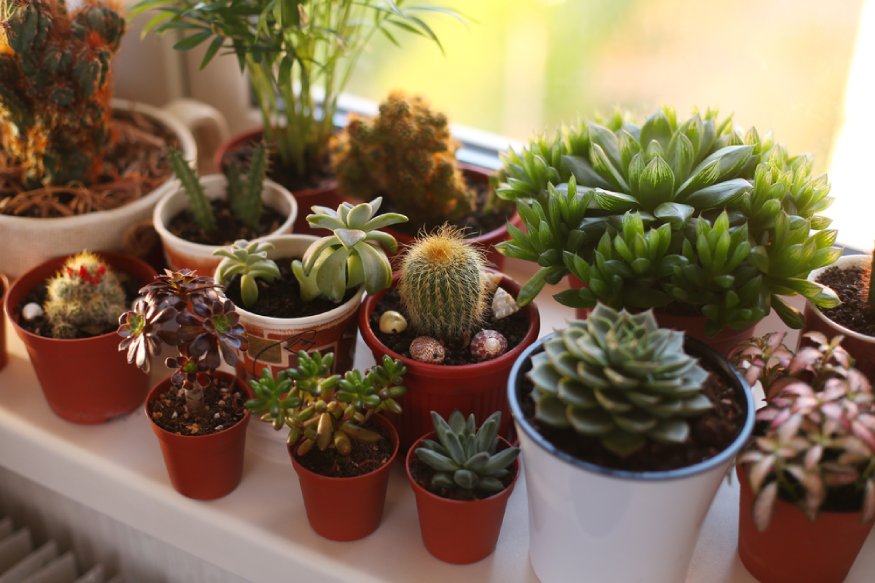
If your succulent isn’t exactly dying, but it definitely isn’t thriving, it may be due to insufficient light. Fix leggy plants by increasing their light exposure
Diagnosing Insufficient Light
A sun-starved succulent is unmistakable, once you know what you’re looking for.
Instead of keeping a full, compact form, light-deprived succulents grow too tall, with extra space between the leaves. This makes them look sparse or “leggy.” Newbie gardeners often think this fast growth is a good sign, but a leggy stem is not strong, so the plant may droop under the weight of the upper leaves or even snap.
Inadequate sunlight drains the vibrancy from succulent leaves. In fact, some succulents only reach their full potential when they are slightly sun-stressed, bordering on sunburn.
For example, the leaves of Coppertone Sedum are mostly green when grown indoors, but outdoors in direct sunlight, they turn the beautiful golden orange tone that gave them their name.
So, if your plant has lost its highlight colors or the green has faded from a rich, dark green to a more insipid green, it may not be getting enough sunlight.
Do Succulents Need Direct Sunlight?
Some succulents, particularly cacti, benefit from direct sunlight, ideally at least six hours per day. However, many other succulents do just fine with bright indirect light indoors or dappled sunlight outdoors.
You can either research your specific succulent to determine its light needs or just experiment. Try growing it in an area of bright indirect light, and if it either becomes leggy or shows other symptoms of inadequate light, move it to a brighter location.
Preventing Insufficient Light
Research your plant, so you know its particular sun needs, then accommodate them. If your apartment only has shaded north-facing windows, you’ll be better off growing a healthy Christmas cactus than a light-starved barrel cactus.
Outside, consider both the number of hours of direct sunlight (six hours is a good target for many succulents) and the quality of the light all day (for example, solid shade versus dappled shade).
Note: Remember, a location that’s good for your succulent in one season may give insufficient sunlight at other times of the year.
Fixing Insufficient Light
Overall, the solution to insufficient light is simply to give your plant more light.
If you’re growing a leggy succulent in a north-facing window, move it to a room with a south-facing window. If it’s tucked inside a bookshelf in a shady corner, try a hanging basket in front of the window instead. Or, keep it where it is and add a grow light.
The importance of giving outdoor succulents the right amount of light is one reason we recommend growing them in containers. You can easily move the containers to address inadequate sunlight or sunburn.
Note: It’s a lot more work to relocate a succulent planted in the ground.
Don’t make abrupt changes in the amount of sunlight you give the plant, even to correct a deficiency. Always add light gradually (moving the pot a few times, or bringing the grow light gradually closer over a period of several days). This is because acclimatizing your plant to the changed conditions will protect it from shock and sunburn.
Cold or Frost Damage

If you grow succulents outdoors or you have an extended power outage, you may end up with a hypothermic succulent. Many succulents are only viable outdoors in USDA growing zone ten and up, and even in those zones, an occasional cold snap could be a death blow.
A few species are more cold-hardy, and adapt reasonably well to short dips below freezing.
Diagnosing Cold or Frost Damage
Cold temperatures alone (below fifty Fahrenheit) can damage many succulents, even in the absence of snow or near-freezing temperatures.
Severely cold-damaged plants look rotten and mushy, with soggy leaves that may be blackened or browned. When the plant dries out, it will turn dry and crispy. If the damage is severe enough, the plant may die. If the damage is more limited, the plant may revive but with brown, damaged leaves.
Preventing Cold or Frost Damage
Indoors, keep succulents away from frozen window panes.
Outdoors, grow your succulents in pots, and move them to a warm sheltered place to prevent frost damage.
If the plants are planted in the ground and you have advance warning of a cold snap, you can try to protect them. Cover your succulents with a cold frame, floating row cover, DIY cloche (for example, an empty milk jug or two-liter soda bottle with the bottom cut off and cap off), a tent made from woven fabric like a blanket, etc.
Any of these devices will trap and heat warm air during the day, which will help protect the plant overnight. You can also water and mulch the plant to help protect the roots.
Fixing Cold or Frost Damage
You can prune off leaves that are damaged enough to be of no use to the plant. Use a sharp, sterile knife.
Move damaged plants to a warm area with bright indirect light (or direct light if the plant prefers it). Give it time to recuperate. If the rot spreads, instead of the plant stabilizing, remove the least damaged part of the plant and propagate it to start over.
Pests

Most healthy succulents aren’t very appealing to pests, but occasionally a succulent will come home from the store with a hidden infestation, and an overwatered plant with root rot is more susceptible.
Diagnosing Pests
The most common types of pests you might see on your succulents are mealybugs, armored scales, and aphids.
Mealybugs look like crumbs and produce a white web-like substance in your succulent’s joints and parts of the leaves. On the other hand, aphids are small green bugs that eat leaves and create “honeydew” (sugary excrement) that attracts ants.
Scale can also affect succulents. Armored scales are flat bugs with a hard upper shell. Like aphids, they leave a sticky honeydew residue on the plant’s leaves.
Info: Technically, mealybugs are a type of scale, but when people say scale they usually mean armored scale.
Fixing Pests
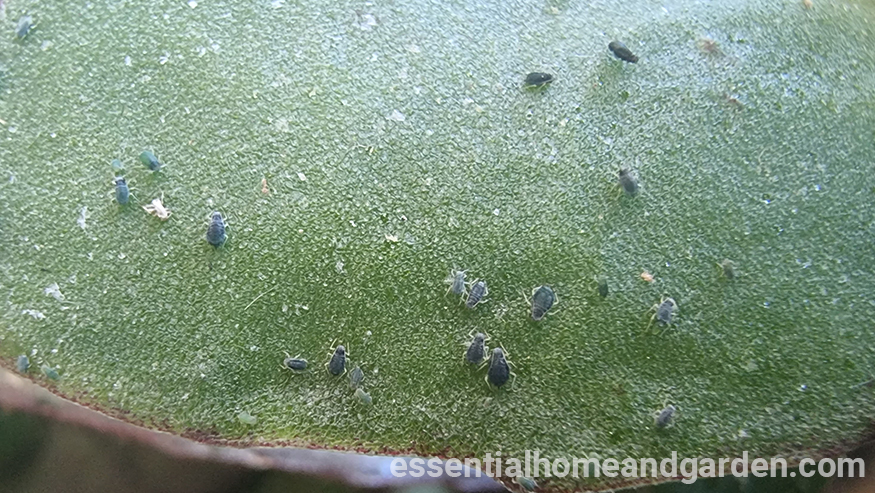
Dealing with a few bugs and dealing with a large infestation are two different issues. Scale stay in one place, so you can easily wipe or scrape them off your plant’s leaves. Unfortunately, they will rebound easily unless you pick off every single one.
You can’t remove mealybugs and aphids individually as easily by hand. But if you only have a few bugs, you can use a little isopropyl alcohol (full strength) on a q-tip to wipe them away. You can also try washing the plant with a firm spray of water.
Cleaning the plant with lightly soapy water can also help (and will eliminate the sticky residue). It’s better to use insecticidal soap, Castille soap, or another pure soap, rather than a soap blended for other purposes (like hand soap or dishwashing soap).
Note: Chemical sprays are riskier, both in terms of whether they’ll work but also, more importantly, whether they’ll hurt your plant. If you consider using a sprayed product, test it first on one leaf. If the leaf still looks okay after a week you can go on to spray the rest of the plant.
Some options for sprays include solutions of isopropyl alcohol, Neem oil, insecticidal soap, or some combination of the three, typically diluted with water. The Missouri Botanical Gardens recommends a mixture of one cup isopropyl alcohol, one tablespoon insecticidal soap, and one quart of water.
Preventing Pests
There are two easy ways to prevent pests. First, keep your plants healthy and watered correctly, so they don’t attract pests. Second, quarantine any new plants brought into the household until you can ensure they don’t come with bonus pe(s)ts.
Disease

Succulents are fairly disease resistant. Other than rot, you can occasionally see powdery mildew or leaf spot.
Diagnosing Disease
Rot (several kinds) usually results from overwatering, inadequate drainage, or damage from frost or cold. Rot causes mushy-textured stems, leaves, or roots, often with brown or black discoloration patches.
It is easy to diagnose the other diseases because their names tell you exactly what to look for.
Powdery mildew is a fungal disease that leaves a powdery white substance on the surface of the leaves — like someone sprinkled them with chalk dust. Most people think of this as a disease affecting squash and cucumber plants, but it can occasionally affect a succulent as well. Black mold, gray mold, and fusarium wilt can also affect succulents.
Leaf spot looks like small brown or reddish circular marks on the leaves of your succulent. Some forms of leaf spot will harm your plant, while others only affect it aesthetically and are generally harmless.
Another potential cause of black spots is tomato wilt, a plant virus that can affect succulents.
Preventing Disease
These diseases are most likely to become a problem in an overwatered succulent, so drainage and an appropriate watering routine are essential.
Powdery mildew and leaf spot are fungal diseases. You can make your plant more resilient by not overwatering, avoiding getting water on leaves, and letting the roots dry out before rewatering.
Note: The only way to be sure of preventing fungal disease is not to expose your plants to fungal spores.
The best precaution is to quarantine new plants whenever you bring them home. This way, if your new plant does have a fungal disease, you can nurse it back to health rather than exposing it to your other succulents.
It’s also a good idea to repot your new plants in a sterile pot with a fresh potting mix.
Fixing Disease
You should quarantine affected plants. Try pruning off the damaged leaves with a sharp pruning knife or shears. Sterilize the knife before and after using it on a diseased plant.
Repot the plant with a fresh, clean potting mix. Then provide normal good care to the plant. If it is healthy enough and you quickly catch the problem, the plant may fight the disease. If not, you can try propagating it, but starting over with an uninfected plant is best.
You can also try spraying fungicidal mixtures on your plant to treat these diseases. Copper, sulfur, and neem oil are common ingredients.
Nutrient Deficiency
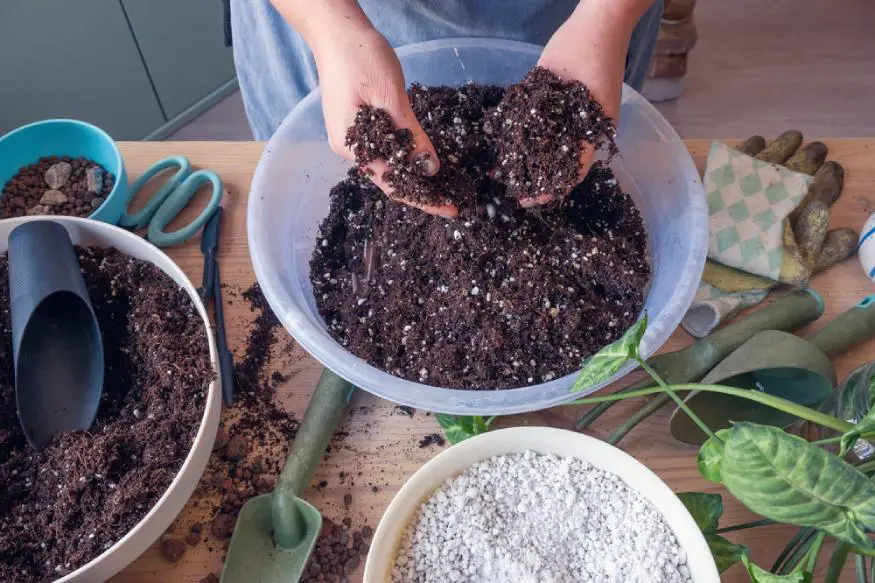
We spend much time thinking about our succulents’ water needs, but a plant does not live on water alone. Succulents like loose-well draining soil without much organic matter, but they also need nutrients.
Diagnosing Nutrient Deficiency
Many succulents grow slowly, so the size of a succulent isn’t the best indicator of its feeding needs. More commonly, you’ll notice that your plant’s leaves are getting pale due to a lack of nitrogen in the soil.
Preventing Nutrient Deficiency
You don’t need to fertilize succulents as often as other plants. I usually fertilize lightly two to three times in the spring or early summer as the plant is coming out of dormancy.
Note: If you make your potting mix with plenty of gritty amendment, as succulents prefer, you will need to fertilize more often than someone who used a purchased potting mix higher in organic matter.
Repotting your succulents every few years is another good way to ensure it has adequate nutrition. There is no need to fertilize in the first year after repotting.
Fixing Nutrient Deficiency
Repotting a succulent is a great way to provide it with the nutrients it needs naturally and to remove offsets, damaged roots, and generally tidy up the plant.
When fertilizing, stick with a gentle organic option, ideally one meant for cacti or succulents, compost tea, or earthworm castings. Regardless of what you use, it’s a good idea to dilute to half the strength recommended by the instructions on the package.

